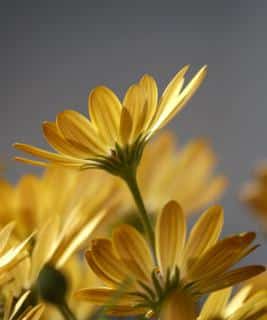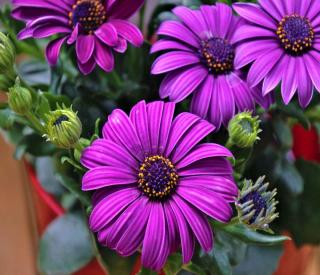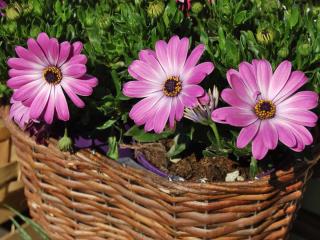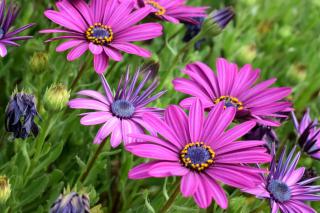

Osteospermum is a wonderful perennial with abundant, magnificent flowers.
Key Osteospermum facts
Name – Osteospermum
Family – Asteraceae
Type – flower, perennial
Height – 8 to 24 inches (20 to 60 cm)
Exposure – full sun
Soil – well-drained, loaded with humus
Foliage: evergreen – Flowering: end spring → mid-fall
Care from planting and pruning and from spring to fall will significantly increase the blooming.
Osteospermum is a perennial flower that can survive winter in regions with mild climates. The more sun, and the better it’s protected from cold, the higher the chance of keeping them year after year.
 This is preferably done in spring. You may also plant in fall if winters in your region are reliably mild.
This is preferably done in spring. You may also plant in fall if winters in your region are reliably mild.
Be careful because the plant is vulnerable to freezing below 23°F (-5°C) and it cannot survive temperatures that are lower than that.
That doesn’t mean it can’t be grown; it just means you’ll have to grow it like annuals, sowing new ones every year in spring.
For growing in containers, it’s better to give it a slightly larger pot than is usual for this size of plant.
 A foot deep and as much wide is perfect (30 cm).
A foot deep and as much wide is perfect (30 cm).When repotting your osteospermum, break the root ball up a bit. This helps aerate the soil, helps you check the plant isn’t root-bound, and new soil meshes better with the old one.
Sowing from seeds is the simplest and fasted method to propagate your osteospermum.
 Care is simple and you’ll only have to water in summer whenever dry spells and high temperatures last for more than a few days.
Care is simple and you’ll only have to water in summer whenever dry spells and high temperatures last for more than a few days.
Remove wilted flowers regularly, this is called deadheading. This step helps stimulate the plant to produce new flowers.
If your Osteospermum has grown too tall and leggy, with just a few steps you can cut it back.
This will result in an incredibly rich growth and many blooms!
Water only during days of high temperatures, and then again only if you notice the plant suffering due to lack of water.
Osteospermum is a very interesting plant because its foliage is evergreen. It stays magnificent in winter.
But this plant has a hard time coping with frost spells colder than 23°F (-5°C), especially if if they last more than a couple days.
Osteospermum resists insects, parasites and diseases particularly well.
If you observe spots on its leaves, you’re certainly dealing with downy mildew.
Though quite rare, osteospermum may be overrun by aphids.
 A very beautiful perennial with an abundant blooming for the most part of the year, osteospermum is also a very easy plant to grow and it resists most diseases very well.
A very beautiful perennial with an abundant blooming for the most part of the year, osteospermum is also a very easy plant to grow and it resists most diseases very well.
The range of colors it offers goes from white to pink, passing through blue and violet. It does well along edges and borders thanks to its bushy, dense blooming.
Although it is vulnerable to freezing, it is great for sowing as an annual in colder regions.
Native to South Africa, it is sometimes goes by the name African daisy (or Cape daisy).
Grow it in pots, too: its extended blooming period is a very gratifying sight!
I just love the purple and yellow Osteospermums, but had bad luck because of the 20 I planted last spring, half of them died in random areas. My front garden is exposed to full all-day sun and the areas are watered by sprinklers twice a week, 10 minutes each. I love these flowers and I n3eed advice on how to keep a bunch of them healthy.
will osteospermum flower in the house if i bring it in from outside
When I replant my osteospermum from pot it came in to a new pot do I need to pull the roots apart a little?
Hi Marcia, yes, its always good to pull them apart a bit: this helps you make sure it isn’t root-bound. In addition, it creates spaces for air and water to circulate. It also makes the sides of the root ball more irregular and the new soil can mix in better with the old soil.